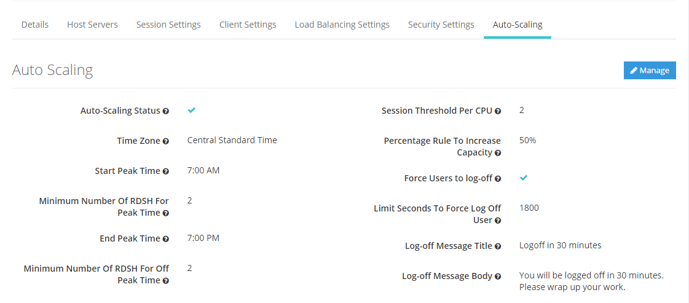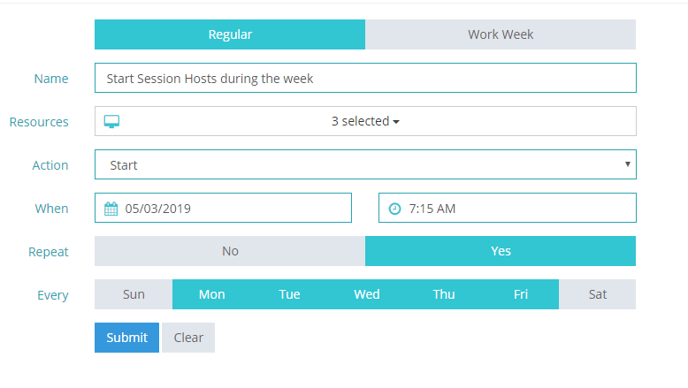Today we are going to discuss a recent customer scenario and what our solution was for them. In this case, the customer had very specific run time requirements, but also wanted to save as much money as possible.
Here were the requirements:
- At least 10 session hosts needed to be running before 8:00 am. All users of this customer log on within a 15-minute window, so they cannot rely on auto-scaling to keep up with the logon storm.
- The customer wants auto-scaling to scale down the VMs at the end of the day. Auto-scaling provides the ability to warn the users that they will be logged out soon.
- They want 2 session host servers to stay up 24 hours a day.
- The deployment must run 7 days a week, but only two session hosts should be running over the weekend and after hours.
To meet this requirement, we used a combination of the Auto-Scaling and the Scheduler. The auto-scaling for the collection looked like this:

The schedule configuration looked like the following:

The Resources selected for the schedule are all of the session hosts in the collection that must be running during peak time during the week. This schedule setting will make sure all of the session hosts are running prior to the 8:00 am logon storm. Remember that the auto-scaler is not able to keep up with logon storms because it can take up to 10 minutes to start a session host. The other thing to keep in mind is that during the peak time defined within the auto-scaler, it will start VMs as needed, but will not shutdown any VMs. As a result, once VMs are started, the auto-scaler will shut them down at the end of peak time.
I agree that this is a bit of a work around, but the auto-scaler consistently works 7 days a week. Keep in mind, it is collection based. Unlike the auto-scaler, the scheduler is much more granular and can be based on time and specific VMs.


